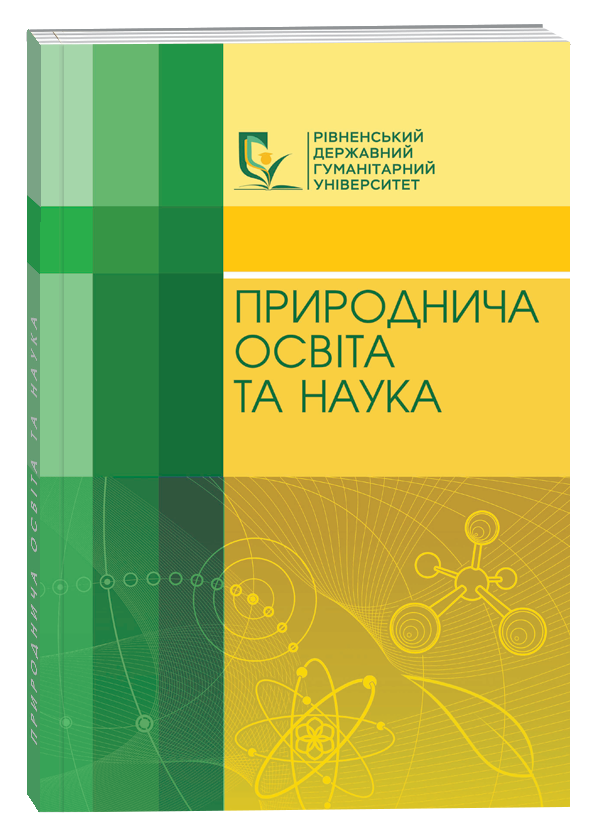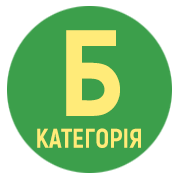РECULIARITIES OF TEACHING THE DISCIPLINE “NURSING IN OBSTETRICS” AT THE RIVNE PROFESSIONAL MEDICAL COLLEGE
Abstract
The article outlines the purpose of studying the discipline “Nursing in Obstetrics”, highlights the experience of teaching this subject at the Rivne Professional Medical College, considers the combined use of classical and modern methods in the process of studying this subject, as well as the use of new teaching formats, such as distance learning (using such platforms as Moodle, Google Meet, Zoom, e-mail, Viber messenger), multimedia presentations, structured presentation of material and others, which allow to form qualified specialists capable of implementing innovations in the field of medicine. Such methods as “standardized patient”, “case method”, “brainstorming” and some other interactive methods are considered, and the possibilities of each of them are shown. Emphasis is placed on the importance of acquiring practical skills and methods of simulation training using phantoms and simulators used for this purpose. The ways of implementing the curriculum using various methods and techniques of teaching, taking into account new and interesting information technologies, were described. Particular attention was paid to summarizing the results and criteria for evaluating the work done (analyzing the qualities of the presentation material, covering the topic, and drawing conclusions). The article also emphasizes teaching methods that make it possible to develop analytical thinking, work in a team, while making not only correct but also quick decisions. In addition, the author emphasizes the importance of developing professional knowledge and practical skills, taking into account the specifics of the work of treatment and prevention measures. Finally, it is concluded that despite the variety of methods and techniques, there is no so-called “gold standard” and only the right ability to combine them in different combinations allows to train true professionals.
References
2. Поляченко Ю. В., Передерій В. Г., Волосовець О. П. [та ін.]. Медична освіта у світі та в Україні. Київ : Книга плюс, 2005. 384 с.
3. Гай Л. А., Сухін Ю. В., Венгер В. Ф., Муксен Сайед, Сердюк В. В. Сучасні методи викладання медичних дисциплін у вищій школі. Медична освіта. 2016. № 1. С. 15−18.
4. Abell Derek. What Makes a Good Case? Eccho Autumn/ Fall. 1997. № 17. С. 4–7.
5. Максименко С. Д. Філоненко М.М. Педагогіка вищої медичної освіти [текст]: підручник. Київ: Центр учбової літератури, 2014. С. 109−116.
6. Національна стратегія розвитку освіти в Україні на період до 2021 року / Указ Президента України від 25 червня 2013 року № 344/2013. URL: http://zakon5.rada.gov.ua/ laws/show/344/2013.
7. Грущенко С. І., Неудачина Т. І., Коробкіна О. Г. Мотивація як фактор успіху навчальної діяльності. Харк. нац. пед. ун-т імені Г. С. Сковороди. Харків : ХНПУ, 2019. 40 с.
8. Упатова І. та ін. Роль комп’ютерних симуляцій у вивченні біологічних процесів та явищ. Перспективи та інновації науки. 2023. Вип. 12. № 12 (30). С. 495–508.
9. Запорожан В. М., Кресюн В.Й., Чернецька О.В. Оптимізація освітньої діяльності університету відповідно до Закону України «Про вищу освіту» Медична освіта, 2015. № 2. С. 53–55.
10. Гриценко Є. М., Овчар О.В., Заколодна О.Е. Інтерактивні методи навчання з використанням методики «Стандартизований пацієнт» у викладанні клінічних дисциплін. Вісник проблем біології і медицини. 2020. Вип. 3. С. 181−183.
11. Sule R., Hunter A., Pierre D. La [et al.]. Context matters: Investigating a case-based learning inter vention at an Indian Medical College. Consortium of Universities for Global Health. 2016. P. 1–9
12. Гончарова Н.Г. Реалізація моделей дистанційного навчання у вищих медичних навчальних закладах. Актуал. питання фармац. та мед. науки та практики. 2014. № 1. С. 93–96.






